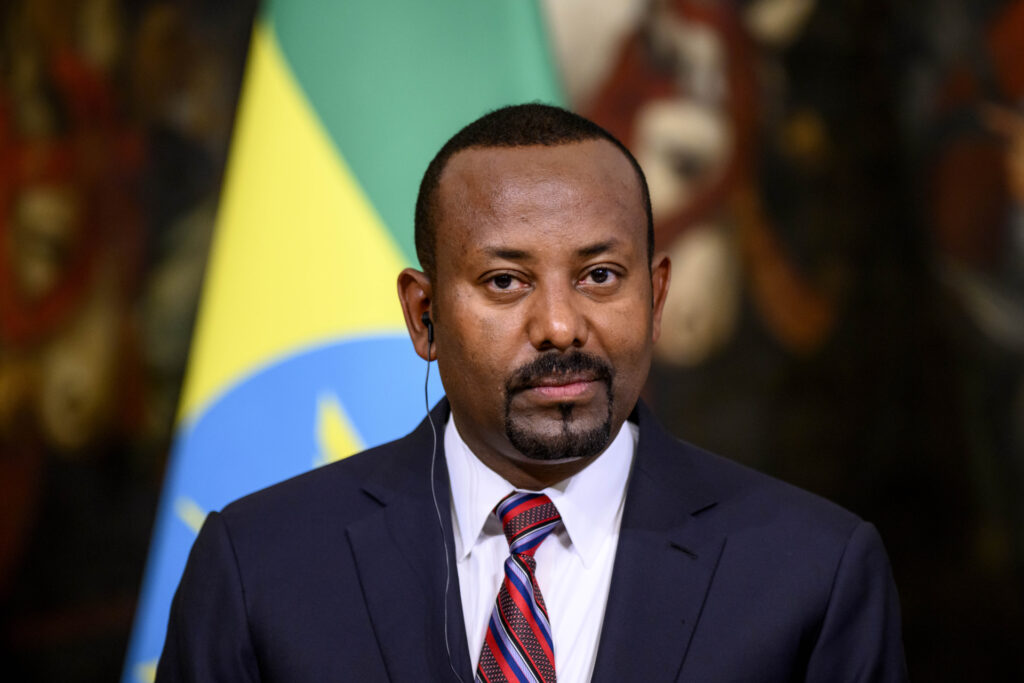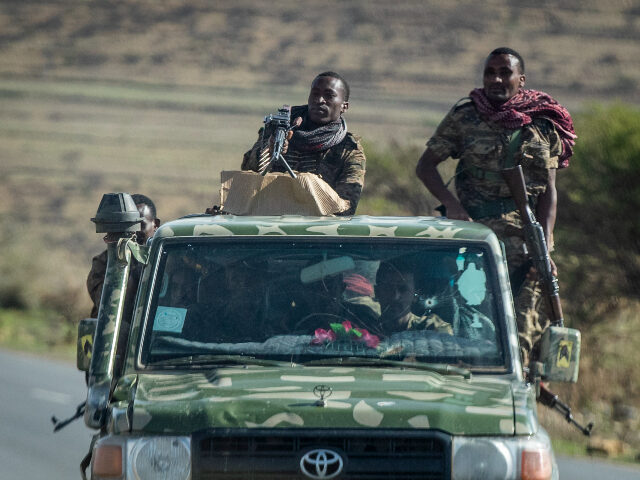Residents of Ethiopia’s Amhara region told the UK Guardian on Monday that government troops went door-to-door in the town of Merawi in January and murdered dozens of civilians to root out an insurgent militia.
One eyewitness reported seeing “at least 34 bodies” lying in the street after the massacre, some with “their faces completely blown out.”
The Guardian pointed out that its scoop was difficult to compile because the Ethiopian central government has banned reporters from traveling to Amhara and cut the entire region off from the Internet. The Guardian’s sources spoke by telephone and insisted on anonymity, fearing for their safety.
Several brutal civil wars have wrecked Ethiopia over the past few years. The prominent headline-grabbing conflict was the rebellion of the Tigray People’s Liberation Front (TPLF), a Marxist militia and political party that controlled much of Ethiopia’s government before the election of Prime Minister Abiy Ahmed in April 2018.

Ethiopian Prime Minister Abiy Ahmed Ali (Antonio Masiello/Getty Images)
Abiy is a member of the Oromo tribe, another of Ethiopia’s many feuding ethnic factions, and his aggressive reform agenda purged Tigrayans from many positions of power. Tensions escalated steadily and boiled over into violence in 2020.
The Tigrayan civil war was incredibly brutal, with atrocities reported on all sides. The TPLF came close to winning at one point, threatening to attack the capital of Addis Ababa. Abiy, who won a Nobel Peace Prize for negotiation peace between Ethiopia and Eritrea, took to the battlefield as a belligerent war leader and called on his contacts in Eritrea for help, which they were only too happy to provide, as they shared a deep mutual loathing with the Tigrayans.
The tide turned against the TPLF, and soon, Abiy and his Eritrean allies faced charges of ethnic cleansing against the Tigrayans. Abiy also mobilized some tribal militias to bolster his forces, which triggered a string of additional ethnic conflicts that continue to this day, even though the Tigrayan civil war formally ended in November 2022.

An Ethiopian woman argues with others over the allocation of yellow split peas distributed by the Relief Society of Tigray in the town of Agula in the Tigray region of northern Ethiopia on May 8, 2021. AP Photo/Ben Curtis, File)
One of the militias Abiy recruited to fight the TPLF was the Fano, a name that means “volunteer fighters” in the Amhara language. The Fano are the ethnic militia of the Amhara, tracing their lineage back to Ethiopia’s war for independence from Italy.
The Fano are not terribly well organized, but they are numerous and utterly ruthless. When Abiy signed the African Union-brokered peace deal that ended the war with Tigray, the Amhara felt they were frozen out of the process, and their contributions to repelling the TPLF drive on Addis Ababa were not respected.
After the Tigray war ended, Abiy called for disarming tribal militias and incorporating the more well-regulated militia “special forces” into the Ethiopian national army. The Amhara were deeply suspicious of this demand, believing Abiy was setting himself up as a dictator and that disarming their tribal militias would leave them vulnerable to attack from the Tigrayans, who harbor both territorial ambitions and deep resentments from the savagery of the 2020-2022 civil war.
Some Fano units revolted, and thousands of disaffected Amhara flocked to their banners. Abiy sent troops to crush the nascent insurrection, backed by heavy air power and artillery. The president declared a six-month state of emergency for Amhara in August 2023, and yet another brutal Ethiopian civil war was on.

Members of the Ethiopian community protest at the White House against the continued drone attacks and persecution of ethnic Amharas on December 17, 2023, in Washington, DC. (J. Countess/Getty Images)
According to the Guardian’s correspondents, Ethiopian army units entered the town of Merawi on January 29 after a clash with Fano forces. The militia abandoned its positions in the town and fell back, but the federal troops were convinced Fano fighters were hiding in civilian homes, so they began gunning down the townsfolk.
One of the eyewitnesses was an Orthodox priest who said there were at least 50 bodies strewn on the main road of Merawi by the morning of January 30. Many of the victims were “killed execution-style, with a bullet wound to their heads.” One of the victims was the priest’s brother, shot dead on his doorstep after the federal troops looted his home.
The independent Ethiopian Human Rights Council (EHRC) estimated that more than 80 people were killed in Merawi. The EHRC said it was able to confirm the identity of “at least 45 civilians who were extrajudicially killed by government security forces for allegedly supporting Fano,” but “it can be assumed that the number of victims is even higher.”
The EHRC demanded a thorough investigation of the incident and other reports of government troops conducting extrajudicial killings in Amhara, as did the U.S. ambassador to Ethiopia, Ervin Massinga.
Massinga demanded “unfettered access by independent human rights monitors as well as an impartial investigation to ensure the perpetrators are brought to justice.” He said he has received “disturbing reports of other violations” that should also be investigated.
Abiy responded on Tuesday by calling on “extremists operating in the Amhara region” to “lay down their arms and take part in peaceful political struggle.” He also plans to hold a peace summit in April in the Amhara capital city of Bahir Dar, awkwardly located only 18 miles from Merawi.

COMMENTS
Please let us know if you're having issues with commenting.